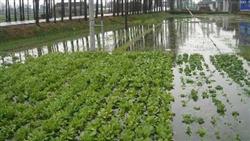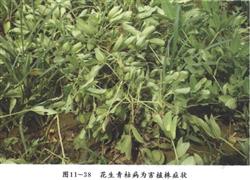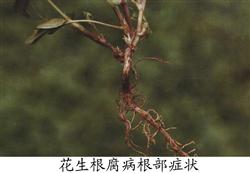Prevention and Control techniques of Peanut waterlogging

The occurrence of peanut waterlogging is due to low-lying terrain, heavy soil and poor drainage; second, in the season of long rainfall or excessive rainfall, there is excess surface water and groundwater, which can not be discharged temporarily. According to the characteristics of water requirement for peanut growth and development, the soil relative humidity at peanut seedling stage is 50%-60%. When the soil relative humidity is higher than 70% or stagnant water, there is a lack of air in the soil, and the respiration and nutrient absorption of peanut roots are hindered, resulting in poor root development, weak yellowing of aboveground parts, the formation of tall seedlings, high flowering nodes and low effective fruiting rate. The soil relative humidity of 60%-75% during the flowering period of peanut is more suitable. When the soil relative humidity is higher than 70% or stagnant water, it is not conducive to peanut pod development, which can cause discoloration of fruit shell, decrease of oil content, and even pod mildew deterioration, loss of economic value. Peanuts like drought and waterlogging, and waterlogging has a great impact on the growth and development of peanuts. After peanuts suffer from waterlogging, timely measures should be taken to strengthen field management in order to reduce disaster and ensure yield. The specific measures are as follows: 1. Remove the stagnant water in the field in time. According to the situation of stagnant water and topography, drainage machinery and ditches are used to discharge the stagnant water in the field and stagnant water in the plough layer as soon as possible, so as to reduce the time of stagnant water in the field as much as possible. 2. Breaking the membrane and dispersing the moisture to reduce the rotten fruit. If the soil water content is too high, the soil moisture should be broken in time to keep the soil well ventilated so as to reduce the occurrence of rotten fruit. 3. Increase the application of available fertilizer in time. After flooding, peanut lost a lot of soil nutrients, coupled with the weak root absorptive capacity, timely topdressing is very beneficial to restore plant growth and increase yield. Before the plant resumes growth, the fungicide Hollick + 0.2% potassium dihydrogen phosphate solution + 0.5% 0.1% urea solution is mixed and foliar sprayed 2-3 times to reduce the loss of waterlogging. 4. prevention and control of diseases and insect pests. After waterlogging, high temperature and humidity in the field, coupled with weak peanut growth and reduced stress resistance, are suitable for the occurrence of a variety of diseases and insect pests. Timely investigation and control should be carried out to control the spread. Mainly control peanut leaf spot disease, cotton bollworm to diseases and insect pests.
- Prev

Control techniques of Peanut bacterial Wilt and Stem Rot
First, peanut bacterial wilt 1, symptoms. The disease of peanut bacterial wilt began to occur before and after flowering, but the disease was the most serious at the stage of flowering and needling, and the disease was alleviated after podding. The biggest symptoms are as follows: the upper leaves of the diseased plant withered rapidly, the vascular bundles of the underground roots turned brown, the longitudinal rhizomes, and the squeezed incisions were permeable when it was wet.
- Next

How to prevent and cure the rotten roots of peanuts?
There are generally two reasons for peanut root rot: one is water stains, and the other is root rot. Prevention and control should first remove waterlogging, keep the ditch unblocked, and before sowing peanuts, coat the seeds with 10% Shile, and irrigate the roots with 1000 times of Luheng No. 1 or No. 2 after the disease, foliar spray is ineffective. Implement crop rotation and lighten the sick field.
Related
- The first cup of black tea in spring, the flavor and history of tea gardens in Kenya, Africa
- The computer can not only choose potatoes, but also grow tea rice. AI will grow winter oolong tea champion.
- It is not only the inflated tea bitten by insects, but also engraved with the four seasons tea in Beipu.
- The Oriental Beauty Tea Festival in Zhuxian County takes the stage at the weekend to experience the plus-size feast of oil tea.
- & quot; Oriental Beauty Tea & Exploration of Emei in Hsinchu, the hometown of quot;
- The new variety of strawberry "Tainong 1" dessert is the first choice with mellow aroma. Crimson gorgeous
- History of Tea in Taiwan: from Wild Inner Mountain to Export Tea Garden
- Two types of Taiwan Oriental Beauty Black Tea won the British three-Star Award for Childhood Tea Xiang Zhang Jiaqi changed from pilot to champion tea maker.
- Banana species and varieties: the planting history of Taiwan Xianren banana and dwarf banana is long, is banana disease resistant?
- Coffee planting Technology: Qianjie Coffee from Seedling to harvesting

